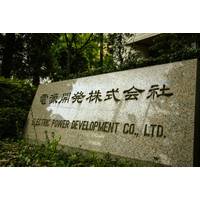China’s new crude oil futures contract, which began trading this week, has a good chance of confounding the doubters and becoming a regional benchmark where other contracts have failed.
The history of futures and options trading is littered with new contracts launched amid great fanfare but which subsequently failed to develop sufficient liquidity and have been discontinued or faded into irrelevance.
But the new crude futures contract launched on the Shanghai International Energy Exchange comes after years of meticulous preparation and has many of the ingredients needed to be successful.
Three elements determine the success or failure of a new futures contract, according to an extensive literature review prepared for the Shanghai Futures Exchange three years ago.
The contract must fulfil a commercial need for hedging. It must succeed in attracting a pool of speculators. And public policy must not be too adverse (“Why some futures contracts succeed and others fail”, Till, 2014).
China’s new oil futures contract clearly meets the first two criteria and has a fair chance of succeeding on the third as well.
MEETING A HEDGING NEED
China has already overtaken the United States to become the world's largest crude importer, so there is a clear need to hedge the resulting price risks.
The need for a new contract and its basic features were showcased two years ago in a presentation by China’s leading crude importer (“Review of current and potential Asian oil benchmarks”, Unipec, 2016).
China’s refiners import mostly medium and heavy sour crudes, which trade at a substantial discount to lighter and sweeter oils.
The two main existing benchmarks, Brent and U.S. light sweet crude, also known as WTI, are based on light low-sulphur crude oils.
In contrast, the new Shanghai futures contract is based on a basket of medium and heavy crudes from the Middle East and China itself with a significantly higher sulphur content.
The new futures contract approximates the sort of crudes that China is importing much more closely than Brent or WTI.
Foreign crudes deliverable against the contract include oils from the United Arab Emirates, Oman and Iraq, which all trade freely.
But they also closely resemble other grades China imports in significant volumes, including crude from Saudi Arabia, Iran and Russia.
The new contract is denominated in yuan rather than U.S. dollars, allowing refiners to manage their price risks more effectively.
ATTRACTING SPECULATORS
The contract should have no difficulty in attracting a pool of speculators to provide liquidity since China has a large number of domestic traders and brokers familiar with commodity markets.
China has already launched several highly successful contracts, including steel, iron ore and copper, all of which have become liquid benchmarks.
There is a large community of domestic speculators and a network of brokerages, which should help the new contract succeed.
China has many of the network characteristics that have made Chicago, New York, London and Singapore successful futures trading hubs.
REGULATORY CONCERNS
The biggest source of uncertainty surrounds the attitude of the government towards price volatility and its willingness to allow fairly unrestricted futures trading.
China’s government has not always been comfortable with extreme price swings and high levels of speculative activity, and has periodically intervened in the markets.
But the same impulses have been seen in other futures trading centres, at least historically, and China’s regulatory interventions have not prevented the successful development of contracts for other commodities.
Given China’s increasing dependence on crude imports and ambition to be a global financial centre, the government has a strong strategic interest in ensuring the new contract becomes a successful benchmark.
The new crude contract has some distinctive characteristics and restrictions that have drawn adverse comment (“China aims to challenge Brent, WTI oil with crude futures launch”, Reuters, March 23).
There are strict limits on the number of cancelled orders to curb spoofing but which may deter computer-driven high-frequency traders.
Trading is restricted to three distinct periods each day, rather than being nearly continuous, and there will be lengthy non-trading periods during national holidays.
But most of these restrictions have a sound rationale, including concentrating liquidity, and they are likely to be relaxed as the contract becomes more established.
None of them appears likely to deter liquidity.
China’s new crude futures are unlikely to displace the Brent and WTI light sweet benchmarks in the United States and Europe.
But they have a fair chance of successfully becoming a regional benchmark for the medium and heavy sour crudes favoured by refiners in Asia (“Shanghai crude futures complete globalisation of oil markets”, Reuters, March 28).
By John Kemp




